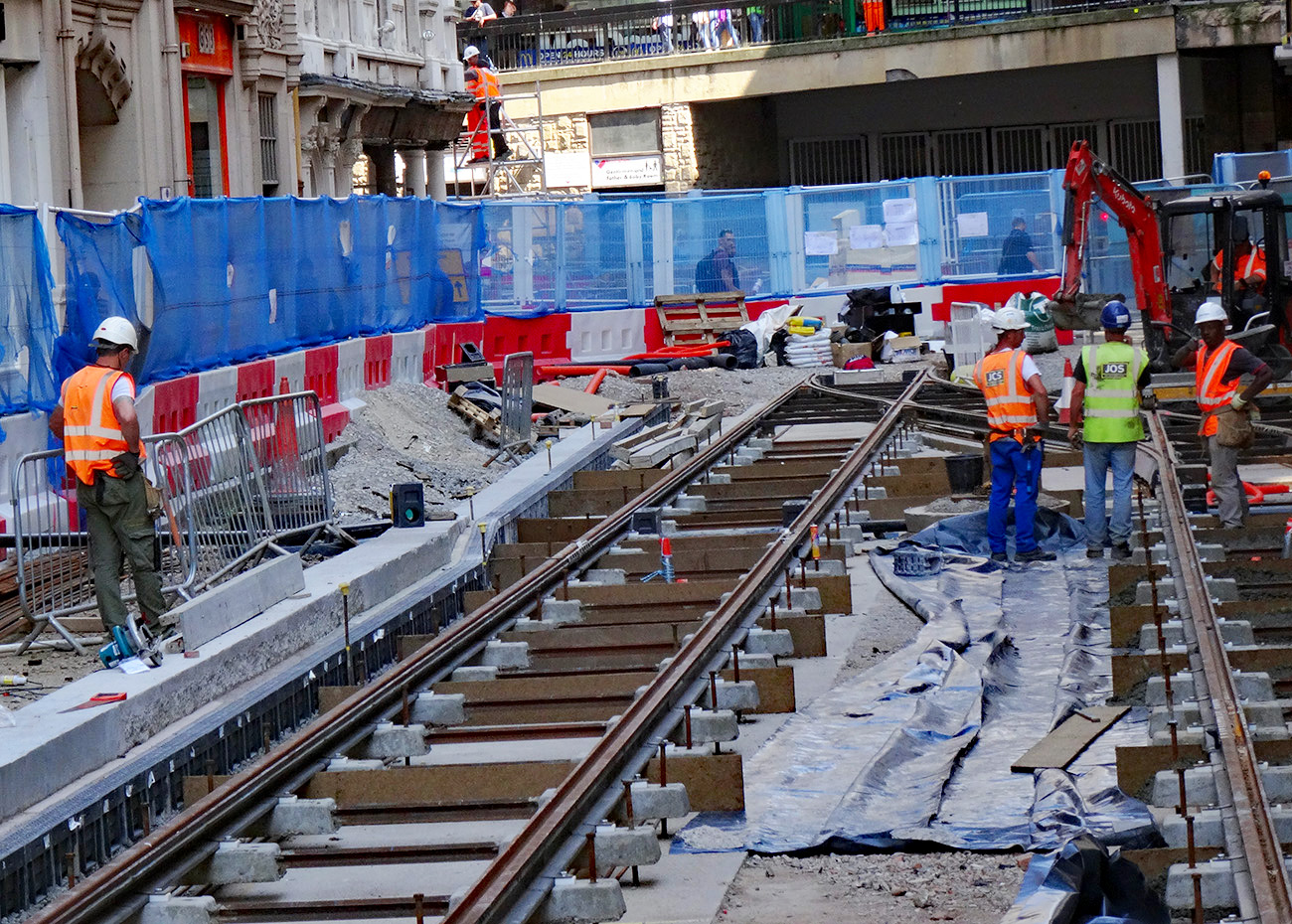 The UK’s poor record on productivity since the 2008 financial crisis is well documented, not least in this blog series. Output per worker has flatlined over the 17 years since the crisis. As was noted in the blog, The UK’s poor productivity record, low UK productivity is caused by a number of factors, including the lack of investment in training, the poor motivation of many workers and the feeling of being overworked, short-termism among politicians and management, and generally poor management practices.
The UK’s poor record on productivity since the 2008 financial crisis is well documented, not least in this blog series. Output per worker has flatlined over the 17 years since the crisis. As was noted in the blog, The UK’s poor productivity record, low UK productivity is caused by a number of factors, including the lack of investment in training, the poor motivation of many workers and the feeling of being overworked, short-termism among politicians and management, and generally poor management practices.
One of the most significant issues identified by analysts and commentators is the lack of investment in physical capital, both by private companies and by the government in infrastructure. Gross fixed capital formation (a measure of investment) has been much lower in the UK compared to international competitors.
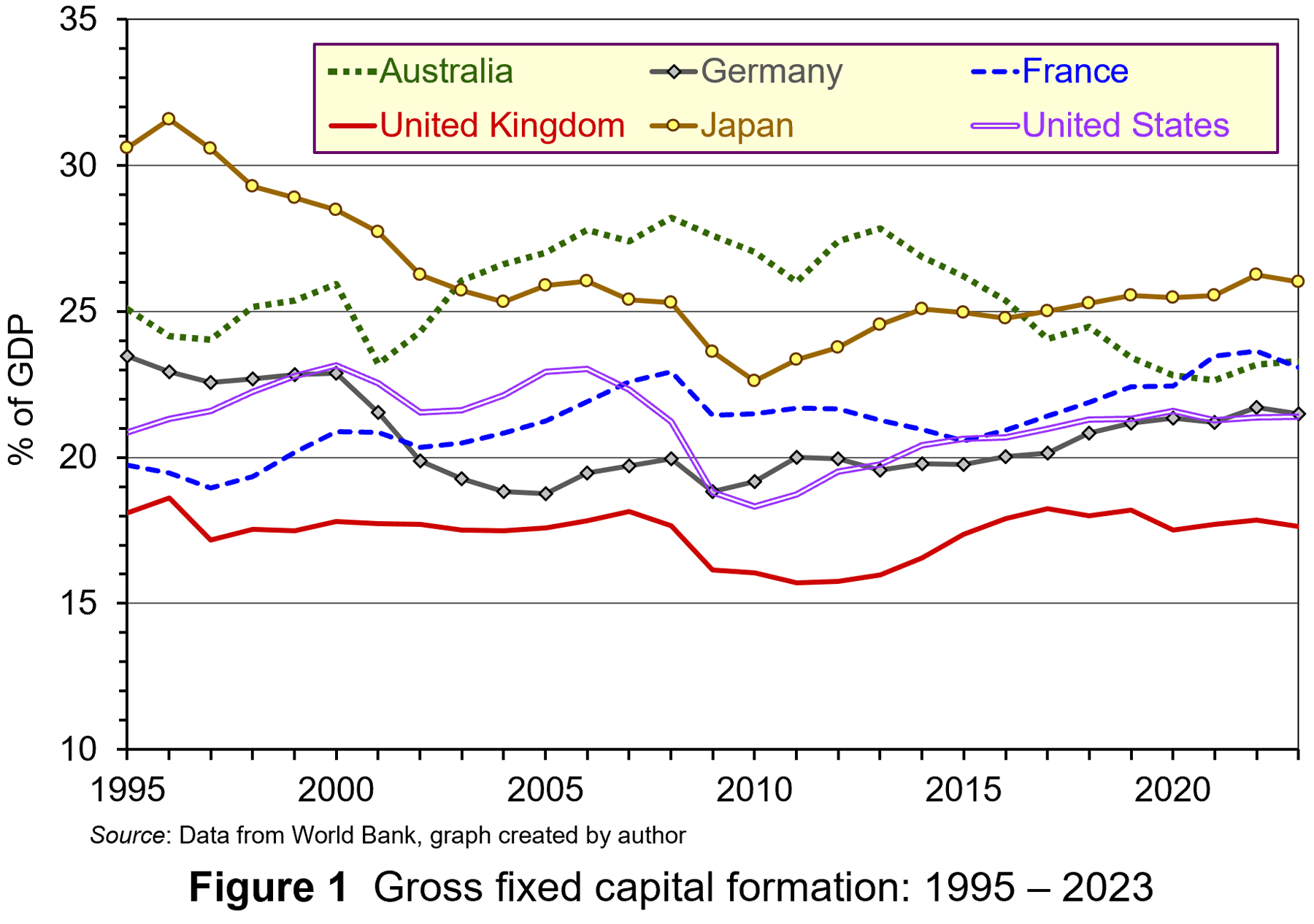 From Figure 1 it can be observed that, since the mid-1990s, the UK has consistently had lower investment as a percentage of GDP compared to other significant developed market economies. The cumulative effect of this gap has contributed to lower productivity and lower economic growth.
From Figure 1 it can be observed that, since the mid-1990s, the UK has consistently had lower investment as a percentage of GDP compared to other significant developed market economies. The cumulative effect of this gap has contributed to lower productivity and lower economic growth.
Interestingly, since the financial crisis, UK firms have had high profitability and associated high cash holdings. This suggests that firms have had a lot of financial resources to reinvest. However, data from the OECD suggests that reinvestment rates in the UK, typically 40–50% of profit, are much lower than in many other OECD countries. In the USA the rate is 50%, in Germany 60–70% and in Japan 70%+. There is much greater emphasis in the UK on returning funds to shareholders through dividends and share buybacks. However, the reinvestment of much of this cash within firms could have gone some way to addressing the UK’s investment gap – but, it hasn’t been done.
 Analysis by the OECD suggest that, while the cost of financing investment has declined since the financial crisis, the gap between this and the hurdle rate used to appraise investments has widened. Between 2010 and 2021 the difference nearly doubled to 4%. This increase in the hurdle rate can be related to increases in the expected rate of return by UK companies and their investors.
Analysis by the OECD suggest that, while the cost of financing investment has declined since the financial crisis, the gap between this and the hurdle rate used to appraise investments has widened. Between 2010 and 2021 the difference nearly doubled to 4%. This increase in the hurdle rate can be related to increases in the expected rate of return by UK companies and their investors.
In this blog we will analyse (re)investment decisions by firms, discussing how increases in the expected rate of return in the UK raise the hurdle rate used to appraise investments. This reduces the incentive to engage in long-term investment. We also discuss policy prescriptions to improve reinvestment rates in the UK.
Investment and the expected rate of return
Investment involves the commitment of funds today to reap rewards in the future. This includes spending on tangible and intangible resources to improve the productive capacity of firms. Firms must decide whether the commitment of funds is worthwhile. To do so, economic theory suggests that they need to consider the compensation required by their provider of finance – namely, investors.
What rewards do investors require to keep their funds invested with the firm?
When conducting investment appraisal, firms compare the estimated rate of return from an investment with the minimum return investors are prepared to receive (termed the ‘expected return’). Normally this is expressed as a percentage of the initial outlay. Firms have to offer returns to investors which are equal to or greater than the minimum expected return – the return that is sufficient to keep funds invested in the firm. Therefore, returns above this minimum expected level are termed ‘excess returns’.
When firms conduct appraisals of potential investments, be it in tangible or intangible capital, they need to take into account the fact that net benefits, expressed as cash flows, will accrue over the life of the investment, not all at once. To do this, they use discounted cash flow (DCF) analysis. This converts future values of the net benefits to their present value. This is expressed as follows:

Where:
NPV = Net present value (discounted net cash flows);
K = Capital outlay (incurred at the present time);
C = Net cash flows (occur through the life of the investment project);
r = Minimum expected rate of return.
In this scenario, the investment involves an initial cash outlay (K), followed in subsequent periods by net cash inflows each period over the life of the investment, which in this case is 25 years. All the cash flows are discounted back to the present so that they can be compared at the same point in time.
The discount rate (r) used in appraisals to determine the present value of net cash flows is determined by the minimum expected return demanded by investors. If at that hurdle rate there are positive net cash flows (+NPV), the investment is worthwhile and should be pursued. Conversely, if at that hurdle rate there are negative net cash flows (–NPV), the investment is not worthwhile and should not be pursued.
According to economic theory, if a firm cannot find any investment projects that produce a positive NPV, and therefore satisfy the minimum expected return, it should return funds to shareholders through dividends or share buybacks so that they can invest the finance more productively.
Firm-level data from the OECD suggest that UK firms have had higher profits and this has been associated with increased cash holdings. But, due to the higher hurdle rate, less investment is perceived to be viable and thus firms distribute more of their profits through dividends and share buybacks. These payouts represent lost potential investment and cumulatively produce a significant dent in the potential output of the UK economy.
Why are expected rates of return higher in the UK?
This higher minimum rate of expected return can be explained by factors influencing its determinants; opportunity cost and risk/uncertainty.
Higher opportunity cost. Opportunity cost relates to the rate of return offered by alternatives. Investors and, by implication firms, will have to consider the rate of return offered by alternative investment opportunities. Typically, investors have focused on interest rates as a measure of opportunity cost. Higher interest rates raise the opportunity cost of an investment and increase the minimum expected rate of return (and vice versa with lower interest rates).
 However, it is not interest rates that have increased the opportunity cost, and hence the minimum expected rate of return associated with investment, in the UK since the financial crisis. For most of the period since 2008, interest rates have been extremely low, sitting at below 1%, only rising significantly during the post-pandemic inflationary surge in 2022. This indicates that this source of opportunity cost for the commitment of business investment has been extremely low.
However, it is not interest rates that have increased the opportunity cost, and hence the minimum expected rate of return associated with investment, in the UK since the financial crisis. For most of the period since 2008, interest rates have been extremely low, sitting at below 1%, only rising significantly during the post-pandemic inflationary surge in 2022. This indicates that this source of opportunity cost for the commitment of business investment has been extremely low.
However, there may be alternative sources of opportunity cost which are pushing up the expected rate of return. UK investors are not restricted to investing in the UK and can move their funds between international markets determined by the rate of return offered. The following table illustrates the returns (in terms of percentage stock market index gain) from investing in a sample of UK, US, French and German stock markets between August 2010 and August 2025.
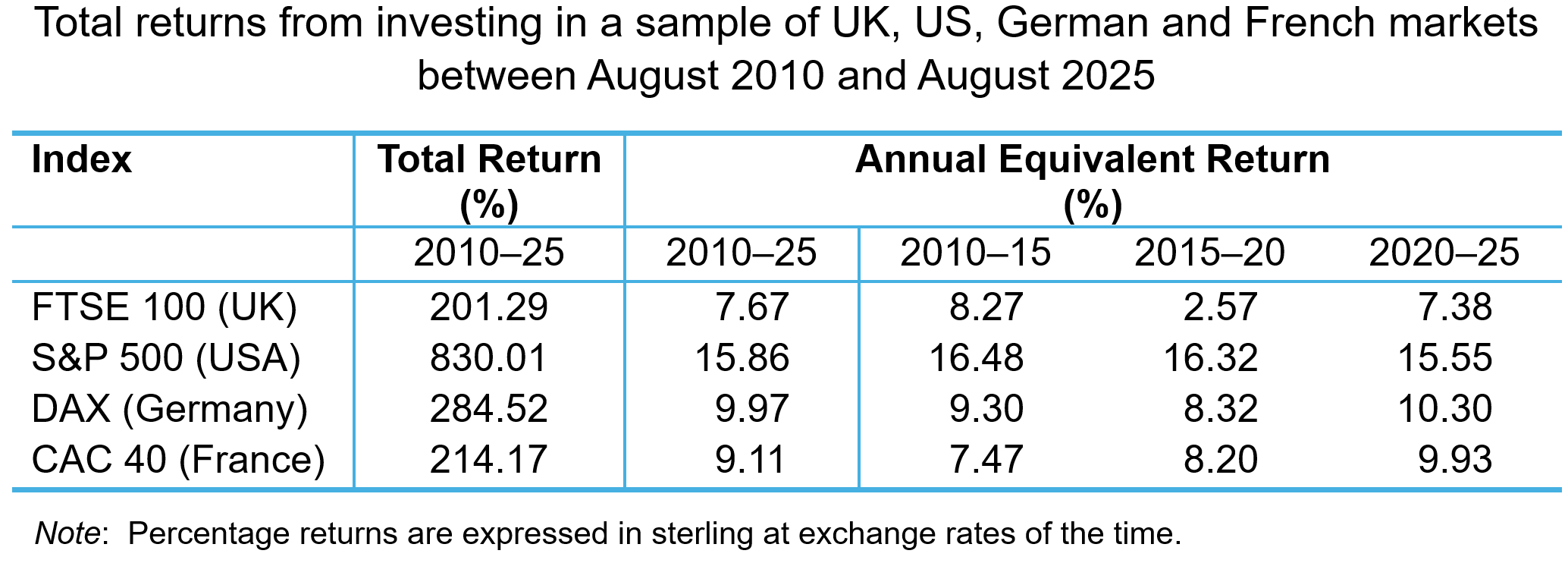
When expressed in sterling, returns offered by UK-listed companies are lower across the whole period and in most of the five-yearly sub-periods. Indeed, the annual equivalent rate of return (AER) for the FTSE 100 index across the whole period is less than half that of the S&P 500. The index offered a paltry annual return of 2.57% between 2015 and 2020, while the US index offered a return of 16.48%. Both the French and German indices offered higher rates of return, in the latter part of the period particularly. This represents a higher opportunity cost for UK investors and may have increased their expectations about the return they require for UK investments.
Greater perceived risk/uncertainty. Expected rates of return are also determined by perceptions of risk and uncertainty – the compensation investors need to bear the perceived risk associated with an investment. Investors are risk averse. They demand higher expected return as compensation for higher perceived risk. Higher levels of risk aversion increase the expected rate of return and related investment hurdle rates.
 There has been much discussion of increased uncertainty and risk aversion among global investors and firms (see the blogs Rising global uncertainty and its effects, World Uncertainty Index, The Chancellor’s fiscal dilemma and Investment set to fall as business is baffled by Trump). The COVID-19 pandemic, inflation shocks, the war in Ukraine, events across the Middle East and the trade policies adopted by the USA in 2025 have combined to produce a very uncertain business environment.
There has been much discussion of increased uncertainty and risk aversion among global investors and firms (see the blogs Rising global uncertainty and its effects, World Uncertainty Index, The Chancellor’s fiscal dilemma and Investment set to fall as business is baffled by Trump). The COVID-19 pandemic, inflation shocks, the war in Ukraine, events across the Middle East and the trade policies adopted by the USA in 2025 have combined to produce a very uncertain business environment.
While these have been relatively recent factors influencing world-wide business uncertainty, perceptions of risk and uncertainty concerning the UK economy seem to be longer established. To measure policy-related economic uncertainty in the UK, Baker, Bloom and Davis at www.PolicyUncertainty.com construct an index based on the content analysis of newspaper articles mentioning terms reflecting policy uncertainty.
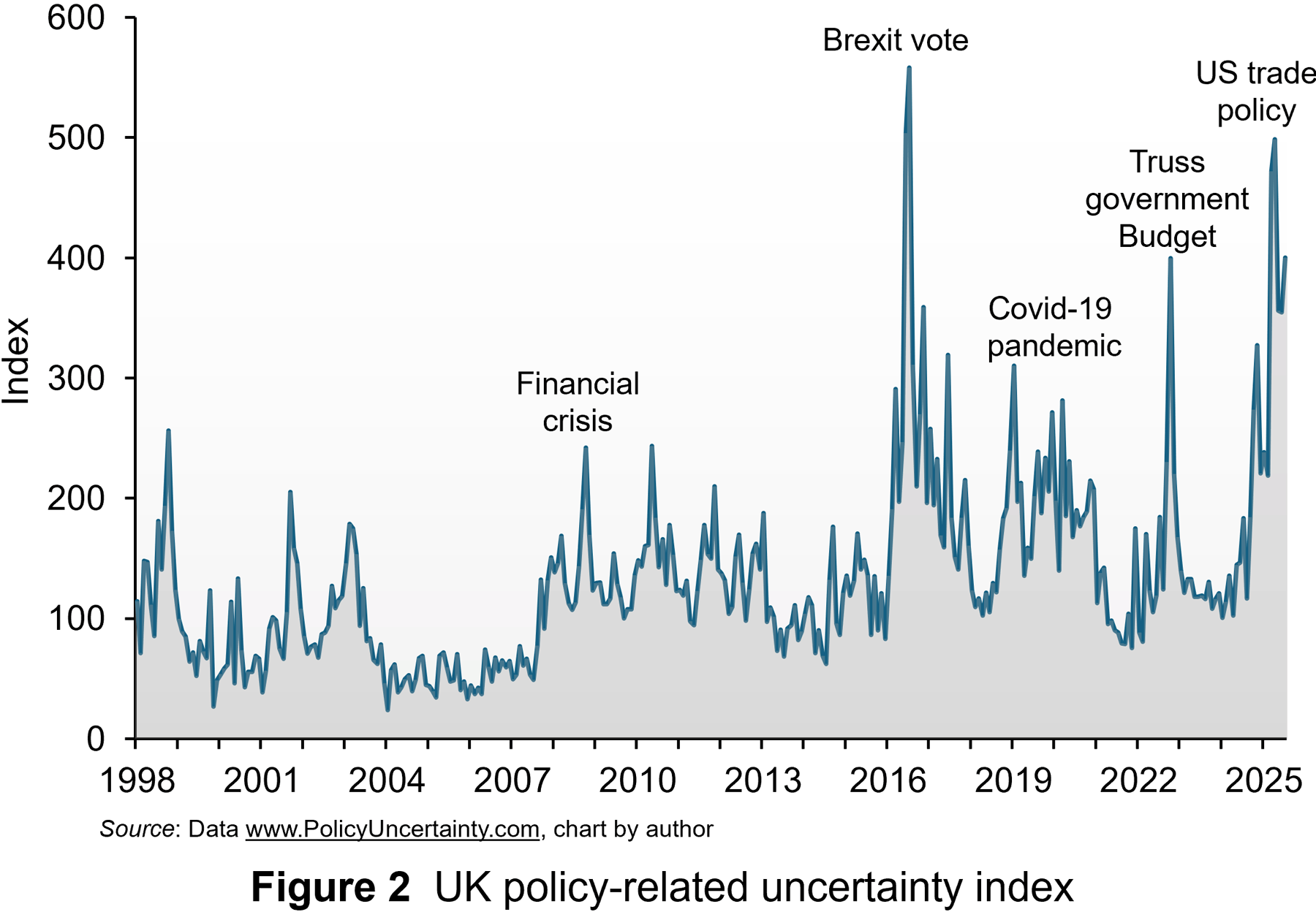 Figure 2 illustrates the monthly index from 1998 to July 2025. The series is normalised to standard deviation 1 prior to 2011 and then summed across papers, by month. Then, the series is normalised to mean 100 prior to 2011.
Figure 2 illustrates the monthly index from 1998 to July 2025. The series is normalised to standard deviation 1 prior to 2011 and then summed across papers, by month. Then, the series is normalised to mean 100 prior to 2011.
Some of the notable spikes in uncertainty in the UK since 2008 have been labelled. Beginning with the global financial crisis, investors and firms became much more uncertain. This was exacerbated by a series of economic shocks that hit the economy, one of which, the narrow vote to leave the European Union in 2016, was specific to the UK. This led to political turmoil and protracted negotiations over the terms of the trade deal after the UK left. This uncertainty has been exacerbated recently by the series of global shocks highlighted above and also the budget uncertainty of Liz Truss’s short-lived premiership and now the growing pressure to reduce government borrowing.
While spikes in uncertainty occurred before the financial crises, the average level of uncertainty, as measured by the index, has been much higher since the crisis. From 1998 to 2008, the average value was 89. Since 2008, the average value has been 163. Since the Brexit vote, the average value has been 185. This indicates a much higher perception of risk and uncertainty over the past 15 year and this translates into higher minimum expected return as compensation. Consequently, this makes many long-term investment projects less viable because of higher hurdle rates. This produces less productive investment in capital, contributing significantly to lower productivity.
Policy proposals
There has been much debate in the UK about promoting greater long-term investment. Reforms have been proposed to improve public participation in long-term investment through the stock market. To boost investment, this would require the investing public to be prepared to accept lower expected returns for a given level of risk or accept higher risk for a given level of returns.
Evidence suggests that the appetite for this may be very low. UK savers tend to favour less risky and more liquid cash deposits. It may be difficult to encourage them to accept higher levels of risk. In any case, even if they did, many may invest outside the UK where the risk-return trade-off is more favourable.
 Over the past 10 years, policy uncertainty has played a significant role in deterring investment. So, if there is greater continuity, this may then promote higher levels of investment.
Over the past 10 years, policy uncertainty has played a significant role in deterring investment. So, if there is greater continuity, this may then promote higher levels of investment.
The Labour government has proposed policies which aim to share or reduce the risk/uncertainty around long-term investment for UK businesses. For instance, a National Wealth Fund (NWF) has been established to finance strategic investment in areas such as clean energy, gigafactories and carbon capture. Unfortunately, the Fund is financed by borrowing through financial markets and the amount expected to be committed over the life of the current Parliament is only £29 billion, assuming that private capital matches public commitments in the ratio expected. It is questionable whether the Fund’s commitment will be sufficient to attract private capital.
Alternatively, Invest 2035 is a proposal to create a stable, long-term policy environment for business investment. It aims to establish an Industrial Strategy Council for policy continuity and to tackle issues like improving infrastructure, reducing energy costs and addressing skills gaps. Unfortunately, even if there is some attempt at domestic policy stability, the benefits may be more than offset by perceptions around global uncertainty, which may mean that UK investors’ minimum expected rates of return remain high and long-term investment low for the foreseeable future.
Articles
Data
Questions
- Use the marginal efficiency of capital framework to illustrate the ‘lost’ investment spending in the UK due to the investment hurdle rate being higher than the cost of capital.
- Explain the arbitrage process which produces the differences in valuations of UK securities and foreign ones due to differences in the expected rate of return.
- Sketch an indifference curve for a risk-averse investor, treating expected return and risk as two characteristics of a financial instrument.
- How does higher uncertainty affect the slope of an indifference curve for such an investor? How does this affect their investment hurdle rate?
- Analyse the extent to which the proposed polices can reduce the investment hurdle rate for UK companies and encourage greater levels of investment.
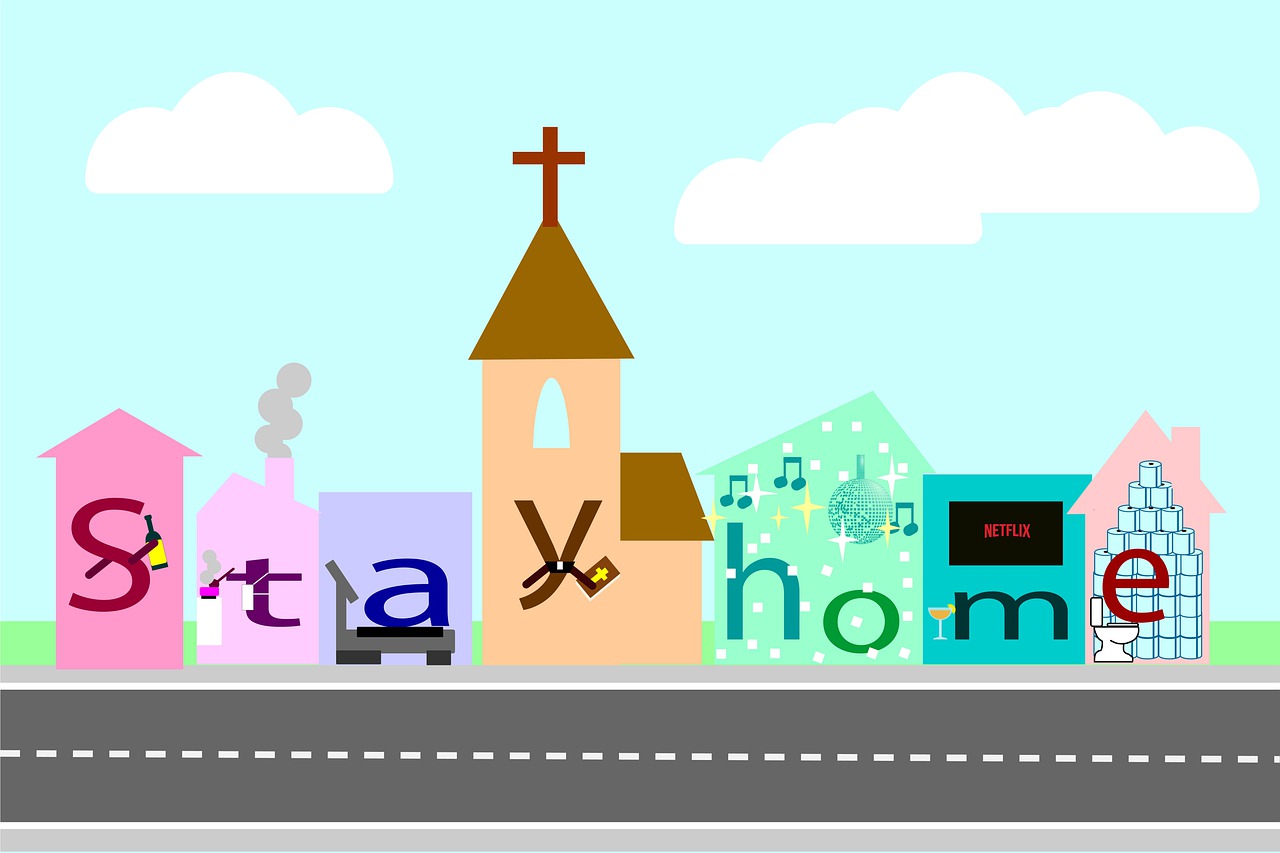 Mid-December saw a rapid rise in coronavirus cases in London and the South East and parts of eastern and central southern England. This was due to a new strain of Covid, which is more infectious. In response, the UK government introduced a new tier 4 level of restrictions for these areas from 20 December. These amount to a complete lockdown. The devolved administrations also announced lockdowns. In addition, the Christmas relaxation of rules was tightened across the UK. Households (up to three) were only allowed to get together on Christmas day and not the days either side (or one day between 23 and 27 December in the case of Northern Ireland). Tier 4 residents were not allowed to visit other households even on Christmas day.
Mid-December saw a rapid rise in coronavirus cases in London and the South East and parts of eastern and central southern England. This was due to a new strain of Covid, which is more infectious. In response, the UK government introduced a new tier 4 level of restrictions for these areas from 20 December. These amount to a complete lockdown. The devolved administrations also announced lockdowns. In addition, the Christmas relaxation of rules was tightened across the UK. Households (up to three) were only allowed to get together on Christmas day and not the days either side (or one day between 23 and 27 December in the case of Northern Ireland). Tier 4 residents were not allowed to visit other households even on Christmas day.
The lockdowns aimed to slow the spread of the virus and reduce deaths. But this comes at a considerable short-term economic cost, especially to the retail and leisure sectors, which are required to close while the lockdowns remain in force. In taking the decision to introduce these tougher measures, the four administrations had to weigh up the benefits of reduced deaths and illness and pressure on the NHS against the short-term economic damage. As far a long-term economic damage is concerned, this might be even greater if lockdowns were not imposed and the virus spread more rapidly.
In a blog back in September, we examined the use of cost–benefit analysis (CBA) to aid decision-making about such decisions. The following is an updated version of that blog.
The use of cost–benefit analysis
 It is commonplace to use cost–benefit analysis (CBA) in assessing public policies, such as whether to build a new hospital, road or rail line. Various attempts in the past few months have been made to use CBA in assessing policies to reduce the spread of the coronavirus. These have involved weighing up the costs and benefits of national or local lockdowns or other containment measures. But, as with other areas where CBA is used, there are serious problems of measuring costs and benefits and assessing risks. This is particularly problematic where human life is involved and where a value has to be attached to a life saved or lost.
It is commonplace to use cost–benefit analysis (CBA) in assessing public policies, such as whether to build a new hospital, road or rail line. Various attempts in the past few months have been made to use CBA in assessing policies to reduce the spread of the coronavirus. These have involved weighing up the costs and benefits of national or local lockdowns or other containment measures. But, as with other areas where CBA is used, there are serious problems of measuring costs and benefits and assessing risks. This is particularly problematic where human life is involved and where a value has to be attached to a life saved or lost.
The first step in a CBA is to identify the benefits and costs of the policy.
Identifying the benefits and costs of the lockdown
The benefits of the lockdown include lives saved and a reduction in suffering, not only for those who otherwise would have caught the virus but also for their family and friends. It also includes lives saved from other diseases whose treatment would have been put (even more) on hold if the pandemic had been allowed to rage and more people were hospitalised with the virus. In material terms, there is the benefit of saving in healthcare and medicines and the saving of labour resources. Then there are the environmental gains from less traffic and polluting activities.
 On the cost side, there is the decline in output from businesses being shut and people being furloughed or not being able to find work. There is also a cost if schools have to close and children’s education is thereby compromised. Then there is the personal cost to people of being confined to home, a cost that could be great for those in cramped living conditions or in abusive relationships. Over the longer term, there is a cost from people becoming deskilled and firms not investing – so-called scarring effects. Here there are the direct effects and the multiplier effects on the rest of the economy.
On the cost side, there is the decline in output from businesses being shut and people being furloughed or not being able to find work. There is also a cost if schools have to close and children’s education is thereby compromised. Then there is the personal cost to people of being confined to home, a cost that could be great for those in cramped living conditions or in abusive relationships. Over the longer term, there is a cost from people becoming deskilled and firms not investing – so-called scarring effects. Here there are the direct effects and the multiplier effects on the rest of the economy.
Estimating uncertain outcomes
 It is difficult enough identifying all the costs and benefits, but many occur in the future and here there is the problem of estimating the probability of their occurrence and their likely magnitude. Just how many lives will be saved from the policy and just how much will the economy be affected? Epidemiological and economic models can help, but there is a huge degree of uncertainty over predictions made about the spread of the disease, especially with a new strain of the virus, and the economic effects, especially over the longer term.
It is difficult enough identifying all the costs and benefits, but many occur in the future and here there is the problem of estimating the probability of their occurrence and their likely magnitude. Just how many lives will be saved from the policy and just how much will the economy be affected? Epidemiological and economic models can help, but there is a huge degree of uncertainty over predictions made about the spread of the disease, especially with a new strain of the virus, and the economic effects, especially over the longer term.
One estimate of the number of lives saved was made by Miles et al. in the NIESR paper linked below. A figure of 440 000 was calculated by subtracting the 60 000 actual excess deaths over the period of the first lockdown (March to June 2020) from a figure of 500 000 lives lost which, according to predictions, would have been the consequence of no lockdown. However, the authors acknowledge that this is likely to be a considerable overestimate because:
It does not account for changes in behaviour that would have occurred without the government lockdown; it does not count future higher deaths from side effects of the lockdown (extra cancer deaths for example); and it does not allow for the fact that some of those ‘saved’ deaths may just have been postponed because when restrictions are eased, and in the absence of a vaccine or of widespread immunity, deaths may pick up again.
Some help in estimating likely outcomes from locking down or not locking down the economy can be gained by comparing countries which have taken different approaches. The final article in the first list below compares the approaches in the UK and Sweden. Sweden had much lighter control measures than the UK and did not impose a lockdown. Using comparisons of the two approaches, the authors estimate that some 20 000 lives were saved by the lockdown – considerably less than the 440 000 estimate.
Estimating the value of a human life
To assess whether the saving of 20 000 lives was ‘worth it’, a value would have to be put on a life saved. Although putting a monetary value on a human life may be repugnant to many people, such calculations are made whenever a project is assessed which either saves or costs lives. As we say in the 10th edition of Economics (page 381):
Some people argue ‘You can’t put a price on a human life: life is priceless.’ But just what are they saying here? Are they saying that life has an infinite value? If so, the project must be carried out whatever the costs, and even if other benefits are zero! Clearly, when evaluating lives saved from the project, a value less than infinity must be given.
Other people might argue that human life cannot be treated like other costs and benefits and put into mathematical calculations. But what are these people saying? That the question of lives saved should be excluded from the cost–benefit study? If so, the implication is that life has a zero value! Again this is clearly not the case.
In practice, there are two approaches used to measure the value of a human life.
 The first uses the value of a statistical life (VSL). This is based on the amount extra the average person would need to be paid to work in a job where there is a known probability of losing their life. So if people on average needed to be paid an extra £10 000 to work in a job with a 1% chance of losing their life, they would be valuing a life at £1 000 000 (£10 000/0.01). To avoid the obvious problem of young people’s lives being valued the same as old people’s ones, even though a 20 year-old on average will live much longer than a 70 year-old, a more common measure is the value of a statistical life year (VSLY).
The first uses the value of a statistical life (VSL). This is based on the amount extra the average person would need to be paid to work in a job where there is a known probability of losing their life. So if people on average needed to be paid an extra £10 000 to work in a job with a 1% chance of losing their life, they would be valuing a life at £1 000 000 (£10 000/0.01). To avoid the obvious problem of young people’s lives being valued the same as old people’s ones, even though a 20 year-old on average will live much longer than a 70 year-old, a more common measure is the value of a statistical life year (VSLY).
A problem with VSL or VSLY measures is that they only take into account the quantity of years of life lost or saved, not the quality.
A second measure rectifies this problem. This is the ‘quality of life adjusted year (QALY)’. This involves giving a value to a year of full health and then reducing it according to how much people’s quality of life is reduced by illness, injury or poverty. The problem with this measure is the moral one that a sick or disabled person’s life is being valued less than the life of a healthy person. But it is usual to make such adjustments when considering medical intervention with limited resources.
One adjustment often made to QALYs or VSLYs is to discount years, so that one year gained would be given the full value and each subsequent year would be discounted by a certain percentage from the previous year – say, 3%. This would give a lower weighting to years in the distant future than years in the near future and hence would reduce the gap in predicted gains from a policy between young and old people.
Cost–effectiveness analysis (CEA)
Even using QALYs, there is still the problem of measuring life and health/sickness. A simpler approach is to use cost–effectiveness analysis (CEA). This takes a social goal, such as reducing the virus production rate (R) below 1 (e.g. to 0.9), and then finding the least-cost way of achieving this. As Mark Carney says in his third Reith Lecture:
As advocated by the economists Nick Stern and Tim Besley, the ideal is to define our core purpose first and then determine the most cost-effective interventions to achieve this goal. Such cost–effectiveness analysis explicitly seeks to achieve society’s values.
Cost–effectiveness analysis can take account of various externalities – as many of the costs will be – by giving them a value. For example, the costs of a lockdown to people in the hospitality sector or to the education of the young could be estimated and included in the costs. The analysis can also take into account issues of fairness by identifying the effects on inequality when certain groups suffer particularly badly from Covid or lockdown policies – groups such as the poor, the elderly and children. Achieving the goal of a specific R for the least cost, including external costs and attaching higher weights on the effects on certain groups then becomes the goal. As Carney says:
R brings public health and economics together. Relaxations of restrictions increase R, with economic, health and social consequences. A strategic approach to Covid is the best combination of policies to achieve the desired level of infection control at minimum economic cost with due respect for inequality, mental health and other social consequences, and calculating those costs then provides guidance when considering different containment strategies. That means paying attention to the impact on measures of fairness, the social returns to education, intergenerational equity and economic dynamism.
Conclusion
Given the uncertainties surrounding the measurement of the number of lives saved and the difficulties of assigning a value to them, and given the difficulties of estimating the economic and social effects of lockdowns, it is not surprising that the conclusions of a cost–benefit analysis, or even a cost–effectiveness analysis of a lockdown will be contentious. But, at least such analysis can help to inform discussion and drive future policy decisions. And a cost–effectiveness analysis can be a practical way of helping politicians reach difficult decisions about life and death and the economy.
Articles (original blog)
- When Does the Cure Become Worse Than the Disease? Applying Cost-Benefit Analysis to the Covid-19 Recovery
Journal of Medical Ethics, blog, Derek Soled, Michelle Bayefsky and Rahul Nayak (19/5/20)
- How much did the Covid-19 lockdown really cost the UK?
The Guardian, Larry Elliott (6/9/20)
- The UK lockdown: Balancing costs against benefits
VoxEU, David Miles (13/7/20)
- How Economists Calculate The Costs And Benefits Of COVID-19 Lockdowns
Forbes, Chris Conover (27/3/20)
- Coronavirus Is Giving Cost-Benefit Analysts Fits
Bloomberg, Cass R. Sunstein (12/5/20)
- “Stay at Home, Protect the National Health Service, Save Lives”: a cost benefit analysis of the lockdown in the United Kingdom
Wiley Online Library, David Miles, Mike Stedman and Adrian Heald (13/8/20)
- COVID-19 is Forcing Economists to Rethink the Value of Life
RealClearPolicy, James Broughel (20/8/20)
- A cost–benefit analysis of the COVID-19 disease
Oxford Review of Economic Policy, Robert Rowthorn and Jan Maciejowski (28/8/20)
- Living with Covid-19: Balancing Costs against Benefits in the Face of the Virus
National Institute Economic Review, vol. 253, David Miles, Mike Stedman and Adrian Heald (28/7/20)
- How Many Lives Has Lockdown Saved in the UK?
medRxiv, Rickard Nyman and Paul Ormerod (21/8/20)
Articles (additional)
Questions
- What are the arguments for and against putting a monetary value on a life saved?
- Are QALYs the best way of measuring lives saved from a policy such as a lockdown?
- Compare the relative merits of cost–benefit analysis and cost–effectiveness analysis.
- If the outcomes of a lockdown are highly uncertain, does this strengthen or weaken the case for a lockdown? Explain.
- What specific problems are there in estimating the number of lives saved by a lockdown?
- How might the age distribution of people dying from Covid-19 affect the calculation of the cost of these deaths (or the benefits or avoiding them)?
- How might you estimate the costs to people who suffer long-term health effects from having had Covid-19?
- What are the arguments for and against using discounting in estimating future QALYs?
- The Department of Transport currently uses a figure of £1 958 303 (in 2018 prices) for the value of a life saved from a road safety project. Find out how this is figure derived and comment on it. See Box 12.5 in Economics 10th edition and Accident and casualty costs, Tables RAS60001 and RA60003, (Department of Transport, 2019).
 It is commonplace to use cost–benefit analysis (CBA) in assessing public policies, such as whether to build a new hospital, road or rail line. Various attempts in the past few months have been made to use CBA in assessing policies to reduce the spread of the coronavirus. These have involved weighing up the costs and benefits of national or local lockdowns or other containment measures. But, as with other areas where CBA is used, there are serious problems of measuring costs and benefits and assessing risks. This is particularly problematic where human life is involved and where a value has to be attached to a life saved or lost.
It is commonplace to use cost–benefit analysis (CBA) in assessing public policies, such as whether to build a new hospital, road or rail line. Various attempts in the past few months have been made to use CBA in assessing policies to reduce the spread of the coronavirus. These have involved weighing up the costs and benefits of national or local lockdowns or other containment measures. But, as with other areas where CBA is used, there are serious problems of measuring costs and benefits and assessing risks. This is particularly problematic where human life is involved and where a value has to be attached to a life saved or lost.
Take the case of whether the government should have imposed a lockdown: an important question if there were to be a second wave and the government was considering introducing a second lockdown. The first step in a CBA is to identify the benefits and costs of the policy.
Identifying the benefits and costs of the lockdown
The benefits of the lockdown include lives saved and a reduction in suffering, not only for those who otherwise would have caught the virus but also for their family and friends. It also includes lives saved from other diseases whose treatment would have been put (even more) on hold if the pandemic had been allowed to rage and more people were hospitalised with the virus. In material terms, there is the benefit of saving in healthcare and medicines and the saving of labour resources. Then there are the environmental gains from less traffic and polluting activities.
 On the cost side, there is the decline in output from businesses being shut and people being furloughed or not being able to find work. There is also a cost from schools being closed and children’s education being compromised. Then there is the personal cost to people of being confined to home, a cost that could be great for those in cramped living conditions or in abusive relationships. Over the longer term, there is a cost from people becoming deskilled and firms not investing – so-called scarring effects. Here there are the direct effects and the multiplier effects on the rest of the economy.
On the cost side, there is the decline in output from businesses being shut and people being furloughed or not being able to find work. There is also a cost from schools being closed and children’s education being compromised. Then there is the personal cost to people of being confined to home, a cost that could be great for those in cramped living conditions or in abusive relationships. Over the longer term, there is a cost from people becoming deskilled and firms not investing – so-called scarring effects. Here there are the direct effects and the multiplier effects on the rest of the economy.
Estimating uncertain outcomes
 It is difficult enough identifying all the costs and benefits, but many occur in the future and here there is the problem of estimating the probability of their occurrence and their likely magnitude. Just how many lives will be saved from the policy and just how much will the economy be affected? Epidemiological and economic models can help, but there is a huge degree of uncertainty over predictions made about the spread of the disease and the economic effects, especially over the longer term.
It is difficult enough identifying all the costs and benefits, but many occur in the future and here there is the problem of estimating the probability of their occurrence and their likely magnitude. Just how many lives will be saved from the policy and just how much will the economy be affected? Epidemiological and economic models can help, but there is a huge degree of uncertainty over predictions made about the spread of the disease and the economic effects, especially over the longer term.
One estimate of the number of lives saved was made by Miles et al. in the NIESR paper linked below. A figure of 440 000 was calculated by subtracting the 60 000 actual excess deaths over the period of the lockdown from a figure of 500 000 lives lost which, according to predictions, would have been the consequence of no lockdown. However, the authors acknowledge that this is likely to be a considerable overestimate because:
It does not account for changes in behaviour that would have occurred without the government lockdown; it does not count future higher deaths from side effects of the lockdown (extra cancer deaths for example); and it does not allow for the fact that some of those ‘saved’ deaths may just have been postponed because when restrictions are eased, and in the absence of a vaccine or of widespread immunity, deaths may pick up again.
Some help in estimating likely outcomes from locking down or not locking down the economy can be gained by comparing countries which have taken different approaches. The final article below compares the approaches in the UK and Sweden. Sweden had much lighter control measures than the UK and did not impose a lockdown. Using comparisons of the two approaches, the authors estimate that some 20 000 lives were saved by the lockdown – considerably less than the 440 000 estimate.
Estimating the value of a human life
To assess whether the saving of 20 000 lives was ‘worth it’, a value would have to be put on a life saved. Although putting a monetary value on a human life may be repugnant to many people, such calculations are made whenever a project is assessed which either saves or costs lives. As we say in the 10th edition of Economics (page 381):
Some people argue ‘You can’t put a price on a human life: life is priceless.’ But just what are they saying here? Are they saying that life has an infinite value? If so, the project must be carried out whatever the costs, and even if other benefits are zero! Clearly, when evaluating lives saved from the project, a value less than infinity must be given.
Other people might argue that human life cannot be treated like other costs and benefits and put into mathematical calculations. But what are these people saying? That the question of lives saved should be excluded from the cost–benefit study? If so, the implication is that life has a zero value! Again this is clearly not the case.
In practice there are two approaches used to measuring the value of a human life.
 The first uses the value of a statistical life (VSL). This is based on the amount extra the average person would need to be paid to work in a job where there is a known probability of losing their life. So if people on average needed to be paid an extra £10 000 to work in a job with a 1% chance of losing their life, they would be valuing a life at £1 000 000 (£10 000/0.01). To avoid the obvious problem of young people’s lives being valued the same as old people’s ones, even though a 20 year-old on average will live much longer than a 70 year-old, a more common measure is the value of a statistical life year (VSLY).
The first uses the value of a statistical life (VSL). This is based on the amount extra the average person would need to be paid to work in a job where there is a known probability of losing their life. So if people on average needed to be paid an extra £10 000 to work in a job with a 1% chance of losing their life, they would be valuing a life at £1 000 000 (£10 000/0.01). To avoid the obvious problem of young people’s lives being valued the same as old people’s ones, even though a 20 year-old on average will live much longer than a 70 year-old, a more common measure is the value of a statistical life year (VSLY).
A problem with VSL or VSLY measures is that they only take into account the quantity of years of life lost or saved, not the quality.
A second measure rectifies this problem. This is the ‘quality of life adjusted year (QALY)’. This involves giving a value to a year of full health and then reducing it according to how much people’s quality of life is reduced by illness, injury or poverty. The problem with this measure is the moral one that a sick or disabled person’s life is being valued less than the life of a healthy person. But it is usual to make such adjustments when considering medical intervention with limited resources.
One adjustment often made to QALYs or VSLYs is to discount years, so that one year gained would be given the full value and each subsequent year would be discounted by a certain percentage from the previous year – say, 3%. This would give a lower weighting to years in the distant future than years in the near future and hence would reduce the gap in predicted gains from a policy between young and old people.
Conclusion
Given the uncertainties surrounding the measurement of the number of lives saved and the difficulties of assigning a value to them, it is not surprising that the conclusions of a cost–benefit analysis of a lockdown will be contentious. And we have yet to see what the long-term effects on the economy will be. But, at least a cost–benefit analysis of the lockdown can help to inform discussion and help to drive future policy decisions about tackling a second wave, whether internationally, nationally or locally.
Articles
- When Does the Cure Become Worse Than the Disease? Applying Cost-Benefit Analysis to the Covid-19 Recovery
Journal of Medical Ethics, blog, Derek Soled, Michelle Bayefsky and Rahul Nayak (19/5/20)
- How much did the Covid-19 lockdown really cost the UK?
The Guardian, Larry Elliott (6/9/20)
- The UK lockdown: Balancing costs against benefits
VoxEU, David Miles (13/7/20)
- How Economists Calculate The Costs And Benefits Of COVID-19 Lockdowns
Forbes, Chris Conover (27/5/20)
- Coronavirus Is Giving Cost-Benefit Analysts Fits
Bloomberg, Cass R. Sunstein (12/5/20)
- “Stay at Home, Protect the National Health Service, Save Lives”: a cost benefit analysis of the lockdown in the United Kingdom
Wiley Online Library, David Miles, Mike Stedman and Adrian Heald (13/8/20)
- COVID-19 is Forcing Economists to Rethink the Value of Life
RealClearPolicy, James Broughel (20/8/20)
- A cost–benefit analysis of the COVID-19 disease
Oxford Review of Economic Policy, Robert Rowthorn and Jan Maciejowski (28/8/20)
- Living with Covid-19: Balancing Costs against Benefits in the Face of the Virus
National Institute Economic Review, vol. 253, David Miles, Mike Stedman and Adrian Heald (28/7/20)
- How Many Lives Has Lockdown Saved in the UK?
medRxiv, Rickard Nyman and Paul Ormerod (21/8/20)
Questions
- What are the arguments for and against putting a monetary value on a life saved?
- Are QALYs the best way of measuring lives saved from a policy such as a lockdown?
- If the outcomes of a lockdown are highly uncertain, does this strengthen or weaken the case for a lockdown? Explain.
- What specific problems are there in estimating the number of lives saved by a lockdown?
- How might the age distribution of people dying from Covid-19 affect the calculation of the cost of these deaths (or the benefits or avoiding them)?
- How might you estimate the costs to people who suffer long-term health effects from having had Covid-19?
- What are the arguments for and against using discounting in estimating future QALYs?
- The Department of Transport currently uses a figure of £1 958 303 (in 2018 prices) for the value of a life saved from a road safety project. Find out how this is figure derived and comment on it. See Box 12.5 in Economics 10th edition and Accident and casualty costs, Tables RAS60001 and RA60003, (Department of Transport, 2019).
 Many politicians throughout the world,
Many politicians throughout the world,
not just on the centre and left, are arguing for increased spending on infrastructure. This was one of the key proposals of Donald Trump during his election campaign. In his election manifesto he pledged to “Transform America’s crumbling infrastructure into a golden opportunity for accelerated economic growth and more rapid productivity gains”.
Increased spending on inffrastructure has both demand- and supply-side effects.
Unless matched by cuts elsewhere, such spending will increase aggregate demand and could have a high multiplier effect if most of the inputs are domestic. Also there could be accelerator effects as the projects may stimulate private investment.
On the supply side, well-targeted infrastructure spending can directly increase productivity and cut costs of logistics and communications.
The combination of the demand- and supply-side effects could increase both potential and actual output and reduce unemployment.
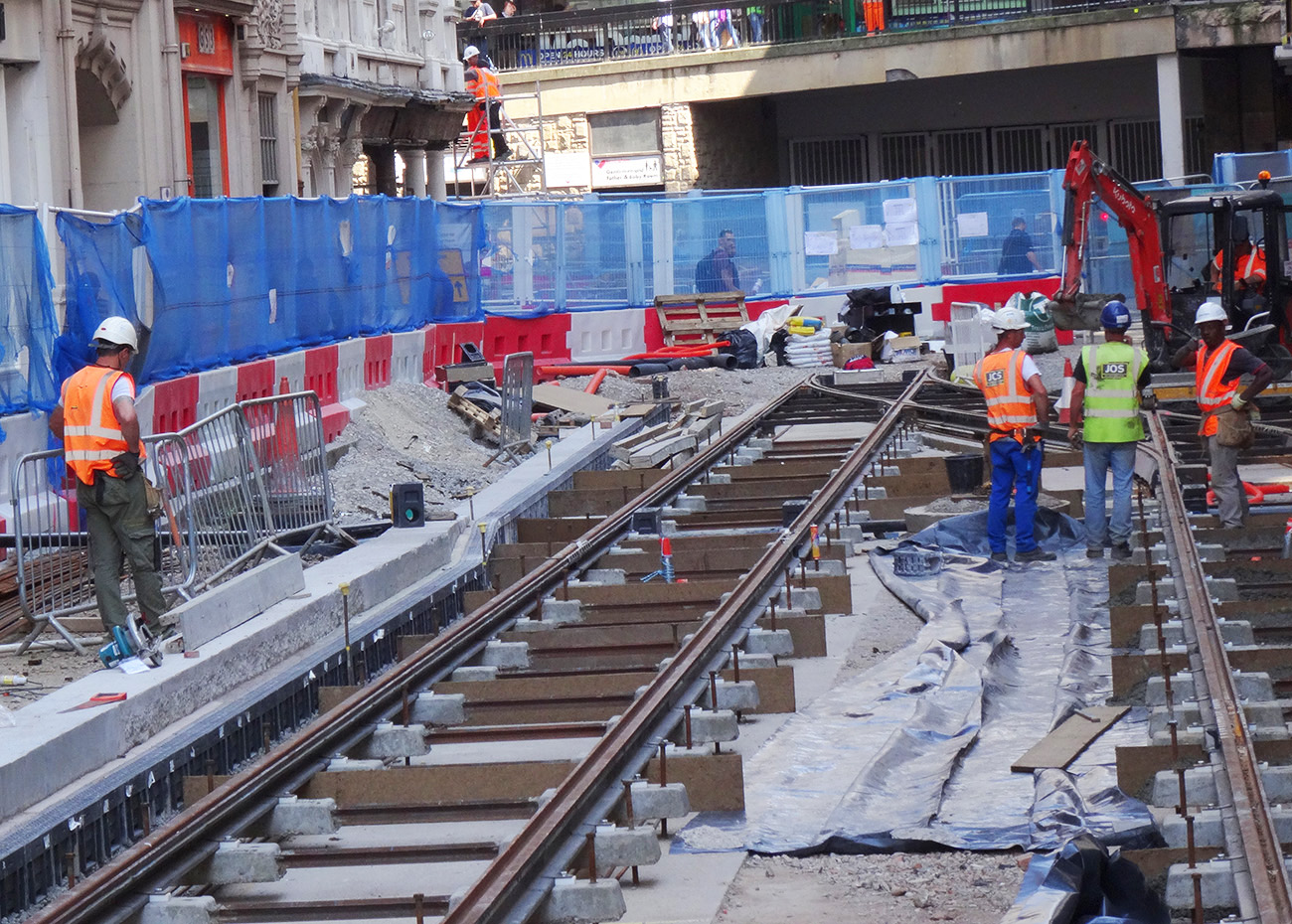 So, if infrastructure projects can have such beneficial effects, why are politicians often so reluctant to give them the go-ahead?
So, if infrastructure projects can have such beneficial effects, why are politicians often so reluctant to give them the go-ahead?
Part of the problem is one of timing. The costs occur in the short run. These include demolition, construction and disruption. The direct benefits occur in the longer term, once the project is complete. And for complex projects this may be many years hence. It is true that demand-side benefits start to occur once construction has begun, but these benefits are widely dispersed and not easy to identify directly with the project.
Then there is the problem of externalities. The external costs of projects may include environmental costs and costs to local residents. This can lead to protests, public hearings and the need for detailed cost–benefit analysis. This can delay or even prevent projects from occurring.
The external benefits are to non-users of the project, such as a new bridge or bypass reducing congestion for users of existing routes. These make the private construction of many projects unprofitable, except with public subsidies or with public–private partnerships. So there does need to be a macroeconomic policy that favours publicly-funded infrastructure projects.
One type of investment that is less disruptive and can have shorter-term benefits is maintenance investment. Maintenance expenditure can avoid much more costly rebuilding expenditure later on. But this is often the first type of expenditure to be cut when public-sector budgets as squeezed, whether at the local or national level.
The problem of lack of infrastructure investment is very much a political problem. The politicians who give the go-ahead to such projects, such as high-speed rail, come in for criticisms from those bearing the short-run costs but they are gone from office once the benefits start to occur. They get the criticism but not the praise.
Articles
Are big infrastructure projects castles in the air or bridges to nowhere? The Economist, Buttonwood’s notebook (16/1/17)
Trump’s plans to rebuild America are misguided and harmful. This is how we should do it. The Washington Post, Lawrence H. Summers (17/1/17)
Questions
- Identify the types of externality from (a) a new high-speed rail line, (b) new hospitals.
- How is discounting relevant to decisions about public-sector projects?
- Why are governments often unwilling to undertake (a) new infrastructure projects, (b) maintenance projects?
- Is a programme of infrastructure investment necessarily a Keynesian policy?
- What accelerator effects would you expect from infrastructure investment?
- Explain the difference between the ‘spill-out’ and ‘pull-in’ effects of different types of public investments in a specific location. Is it possible for a project to have both effects?
- What answer would you give to the teacher who asked the following question of US Treasury Secretary, Larry Summers? “The paint is chipping off the walls of this school, not off the walls at McDonald’s or the movie theatre. So why should the kids believe this society thinks their education is the most important thing?”
- What is the ‘bridge to nowhere’ problem? Why does it occur and what are the solutions to it?
- Why is the ‘castles in the air’ element of private projects during a boom an example of the fallacy of composition?
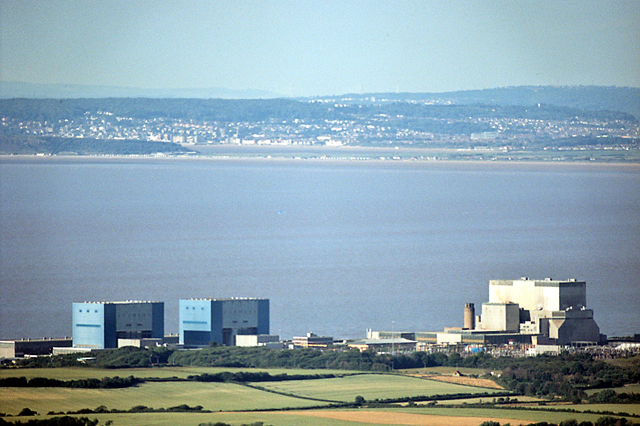 The UK government has finally given the go-ahead to build the new Hinkley C nuclear power station in Somerset. It will consist of two European pressurised reactors, a relatively new technology. No EPR plant has yet been completed, with the one in the most advanced stages of construction at Flamanville in France, having experienced many safety and construction problems. This is currently expected to be more than three times over budget and at least six years behind its original completion date of 2012.
The UK government has finally given the go-ahead to build the new Hinkley C nuclear power station in Somerset. It will consist of two European pressurised reactors, a relatively new technology. No EPR plant has yet been completed, with the one in the most advanced stages of construction at Flamanville in France, having experienced many safety and construction problems. This is currently expected to be more than three times over budget and at least six years behind its original completion date of 2012.
The Hinkley C power station, first proposed in 2007, is currently estimated to cost £18 billion. This cost will be borne entirely by its builder, EDF, the French 85% state-owned company, and its Chinese partner, CGN. When up and running – currently estimated at 2025 – it is expected to produce around 7% of the UK’s electricity output.
On becoming Prime Minister in July 2016, Theresa May announced that the approval for the plant would be put on hold while further investigation of its costs, benefits, 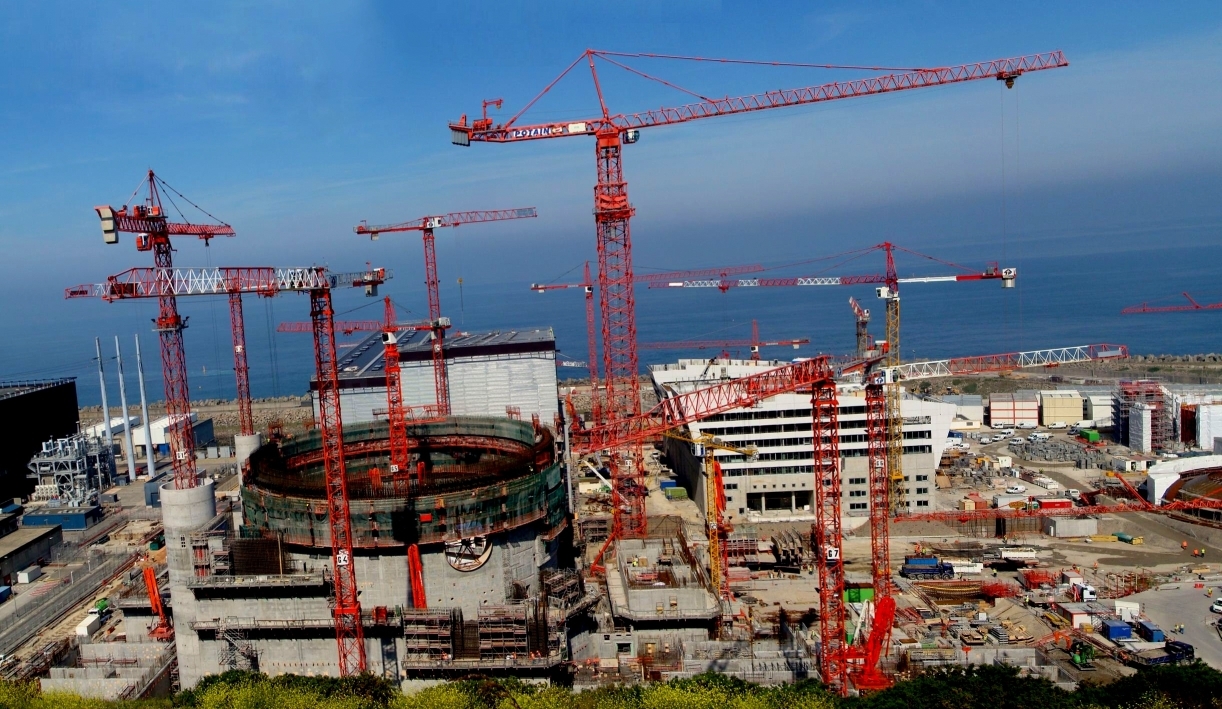 security concerns, technological issues and safeguards was conducted. This has now been completed and approval has been granted subject to new conditions. The main one is that the government “will be able to prevent the sale of EDF’s controlling stake prior to the completion of construction”. This will allow the government to prevent change of ownership during the construction phase. Thus, for example, EDF, would not be allowed to sell its share of Hinkley C to CGN, which currently has a one-third share in the project. EDF and CGN have accepted the new terms.
security concerns, technological issues and safeguards was conducted. This has now been completed and approval has been granted subject to new conditions. The main one is that the government “will be able to prevent the sale of EDF’s controlling stake prior to the completion of construction”. This will allow the government to prevent change of ownership during the construction phase. Thus, for example, EDF, would not be allowed to sell its share of Hinkley C to CGN, which currently has a one-third share in the project. EDF and CGN have accepted the new terms.
After Hinkley the government will have a ‘golden share’ in all future nuclear projects. “This will ensure that significant stakes cannot be sold without the Government’s knowledge or consent.”
In return for their full financing of the project, the government has guaranteed EDF and CGN a price of £92.50 per megawatt hour of electricity (in 2012 prices). This price will be borne by consumers. It will rise with inflation from now and over the first 35 years of the power station’s operation. It is expected that the Hinkley C will have a life of 60 years.
Critics point out that this guaranteed ‘strike price’ is more than double the current wholesale price of electricity and, with the price of renewables falling as technology improves, it will be an expensive way to meet the UK’s electricity needs and cut carbon emissions.
Those in favour argue that it is impossible to predict electricity prices into the distant future and that the certainty this plant will give is worth the high price by current standards.

To assess the desirability of the plant requires an assessment of its costs and benefits. In principle, this is a relatively simple process of identifying and measuring the costs and benefits, including external costs and benefits; discounting future costs and benefits to give them a present value; weighting them by their probability of occurrence; then calculating whether the net present value is positive or negative. A sensitivity analysis could also be conducted to show just how sensitive the net present value would be to changes in the value of specific costs or benefits.
In practice the process is far from simple – largely because of the huge uncertainty over specific costs and benefits. These include future wholesale electricity prices, unforeseen problems in construction and operation, and a range of political issues, such as pressure from various interest groups, and attitudes and actions of EDF and CGN and their respective governments, which will affect not only Hinkley C but other future power stations.
The articles look at the costs and benefits of this, the most expensive construction project ever in the UK, and possibly on Earth..
Articles
Hinkley Point: UK approves nuclear plant deal BBC News (15/9/16)
Hinkley Point: What is it and why is it important? BBC News, John Moylan (15/9/16)
 ‘The case hasn’t changed’ for Hinkley Point C BBC Today Programme, Malcolm Grimston (29/7/16)
‘The case hasn’t changed’ for Hinkley Point C BBC Today Programme, Malcolm Grimston (29/7/16)
U.K. Approves EDF’s £18 Billion Hinkley Point Nuclear Project Bloomberg, Francois De Beaupuy (14/9/16)
Hinkley Point C nuclear power station gets government green light The Guardian, Rowena Mason and Simon Goodley (15/9/16)
Hinkley Point C: now for a deep rethink on the nuclear adventure? The Guardian, Nils Pratley (15/9/16)
Hinkley Point C finally gets green light as Government approves nuclear deal with EDF and China The Telegraph, Emily Gosden (15/9/16)
UK gives go-ahead for ‘revised’ £18bn Hinkley Point plant Financial Times, Andrew Ward, Jim Pickard and Michael Stothard (15/9/16)
Hinkley Point: Is the UK getting a good deal? Financial Times, Andrew Ward (15/9/16)
Hinkley Point is risk for overstretched EDF, warn critics Financial Times, Michael Stothard (15/9/16)
Hinkley C must be the first of many new nuclear plants The Conversation, Simon Hogg (16/9/16)
Report
Nuclear power in the UK National Audit Office, Sir Amyas Morse, Comptroller and Auditor General (12/7/16)
Questions
- Summarise the arguments for going ahead with Hinkley C.
- Summarise the objections to Hinkley C.
- What categories of uncertain costs and uncertain benefits are there for the project?
- Is the project in EDF’s interests?
- How will the government’s golden share system operate?
- How should the discount rate be chosen for discounting future costs and benefits from a project such as Hinkley C?
- What factors will determine the wholesale price of electricity over the coming years? In real terms, do you think it is likely to rise or fall? Explain.
- If nuclear power has high fixed costs and low marginal costs, how does this affect how much nuclear power stations should be used in a situation of daily and seasonal fluctuations in demand?
- How could ‘smart grid’ technology smooth out peaks and troughs in electricity supply and demand? How does this affect the relative arguments about nuclear power versus renewables?
 The UK’s poor record on productivity since the 2008 financial crisis is well documented, not least in this blog series. Output per worker has flatlined over the 17 years since the crisis. As was noted in the blog, The UK’s poor productivity record, low UK productivity is caused by a number of factors, including the lack of investment in training, the poor motivation of many workers and the feeling of being overworked, short-termism among politicians and management, and generally poor management practices.
The UK’s poor record on productivity since the 2008 financial crisis is well documented, not least in this blog series. Output per worker has flatlined over the 17 years since the crisis. As was noted in the blog, The UK’s poor productivity record, low UK productivity is caused by a number of factors, including the lack of investment in training, the poor motivation of many workers and the feeling of being overworked, short-termism among politicians and management, and generally poor management practices.  From Figure 1 it can be observed that, since the mid-1990s, the UK has consistently had lower investment as a percentage of GDP compared to other significant developed market economies. The cumulative effect of this gap has contributed to lower productivity and lower economic growth.
From Figure 1 it can be observed that, since the mid-1990s, the UK has consistently had lower investment as a percentage of GDP compared to other significant developed market economies. The cumulative effect of this gap has contributed to lower productivity and lower economic growth. Analysis by the OECD suggest that, while the cost of financing investment has declined since the financial crisis, the gap between this and the hurdle rate used to appraise investments has widened. Between 2010 and 2021 the difference nearly doubled to 4%. This increase in the hurdle rate can be related to increases in the expected rate of return by UK companies and their investors.
Analysis by the OECD suggest that, while the cost of financing investment has declined since the financial crisis, the gap between this and the hurdle rate used to appraise investments has widened. Between 2010 and 2021 the difference nearly doubled to 4%. This increase in the hurdle rate can be related to increases in the expected rate of return by UK companies and their investors. 
 However, it is not interest rates that have increased the opportunity cost, and hence the minimum expected rate of return associated with investment, in the UK since the financial crisis. For most of the period since 2008, interest rates have been extremely low, sitting at below 1%, only rising significantly during the post-pandemic inflationary surge in 2022. This indicates that this source of opportunity cost for the commitment of business investment has been extremely low.
However, it is not interest rates that have increased the opportunity cost, and hence the minimum expected rate of return associated with investment, in the UK since the financial crisis. For most of the period since 2008, interest rates have been extremely low, sitting at below 1%, only rising significantly during the post-pandemic inflationary surge in 2022. This indicates that this source of opportunity cost for the commitment of business investment has been extremely low.
 There has been much discussion of increased uncertainty and risk aversion among global investors and firms (see the blogs Rising global uncertainty and its effects, World Uncertainty Index, The Chancellor’s fiscal dilemma and Investment set to fall as business is baffled by Trump). The COVID-19 pandemic, inflation shocks, the war in Ukraine, events across the Middle East and the trade policies adopted by the USA in 2025 have combined to produce a very uncertain business environment.
There has been much discussion of increased uncertainty and risk aversion among global investors and firms (see the blogs Rising global uncertainty and its effects, World Uncertainty Index, The Chancellor’s fiscal dilemma and Investment set to fall as business is baffled by Trump). The COVID-19 pandemic, inflation shocks, the war in Ukraine, events across the Middle East and the trade policies adopted by the USA in 2025 have combined to produce a very uncertain business environment.  Figure 2 illustrates the monthly index from 1998 to July 2025. The series is normalised to standard deviation 1 prior to 2011 and then summed across papers, by month. Then, the series is normalised to mean 100 prior to 2011.
Figure 2 illustrates the monthly index from 1998 to July 2025. The series is normalised to standard deviation 1 prior to 2011 and then summed across papers, by month. Then, the series is normalised to mean 100 prior to 2011. Over the past 10 years, policy uncertainty has played a significant role in deterring investment. So, if there is greater continuity, this may then promote higher levels of investment.
Over the past 10 years, policy uncertainty has played a significant role in deterring investment. So, if there is greater continuity, this may then promote higher levels of investment. Mid-December saw a rapid rise in coronavirus cases in London and the South East and parts of eastern and central southern England. This was due to a new strain of Covid, which is more infectious. In response, the UK government introduced a new
Mid-December saw a rapid rise in coronavirus cases in London and the South East and parts of eastern and central southern England. This was due to a new strain of Covid, which is more infectious. In response, the UK government introduced a new  It is commonplace to use cost–benefit analysis (CBA) in assessing public policies, such as whether to build a new hospital, road or rail line. Various attempts in the past few months have been made to use CBA in assessing policies to reduce the spread of the coronavirus. These have involved weighing up the costs and benefits of national or local lockdowns or other containment measures. But, as with other areas where CBA is used, there are serious problems of measuring costs and benefits and assessing risks. This is particularly problematic where human life is involved and where a value has to be attached to a life saved or lost.
It is commonplace to use cost–benefit analysis (CBA) in assessing public policies, such as whether to build a new hospital, road or rail line. Various attempts in the past few months have been made to use CBA in assessing policies to reduce the spread of the coronavirus. These have involved weighing up the costs and benefits of national or local lockdowns or other containment measures. But, as with other areas where CBA is used, there are serious problems of measuring costs and benefits and assessing risks. This is particularly problematic where human life is involved and where a value has to be attached to a life saved or lost. On the cost side, there is the decline in output from businesses being shut and people being furloughed or not being able to find work. There is also a cost if schools have to close and children’s education is thereby compromised. Then there is the personal cost to people of being confined to home, a cost that could be great for those in cramped living conditions or in abusive relationships. Over the longer term, there is a cost from people becoming deskilled and firms not investing – so-called scarring effects. Here there are the direct effects and the multiplier effects on the rest of the economy.
On the cost side, there is the decline in output from businesses being shut and people being furloughed or not being able to find work. There is also a cost if schools have to close and children’s education is thereby compromised. Then there is the personal cost to people of being confined to home, a cost that could be great for those in cramped living conditions or in abusive relationships. Over the longer term, there is a cost from people becoming deskilled and firms not investing – so-called scarring effects. Here there are the direct effects and the multiplier effects on the rest of the economy. It is difficult enough identifying all the costs and benefits, but many occur in the future and here there is the problem of estimating the probability of their occurrence and their likely magnitude. Just how many lives will be saved from the policy and just how much will the economy be affected? Epidemiological and economic models can help, but there is a huge degree of uncertainty over predictions made about the spread of the disease, especially with a new strain of the virus, and the economic effects, especially over the longer term.
It is difficult enough identifying all the costs and benefits, but many occur in the future and here there is the problem of estimating the probability of their occurrence and their likely magnitude. Just how many lives will be saved from the policy and just how much will the economy be affected? Epidemiological and economic models can help, but there is a huge degree of uncertainty over predictions made about the spread of the disease, especially with a new strain of the virus, and the economic effects, especially over the longer term. The first uses the value of a statistical life (VSL). This is based on the amount extra the average person would need to be paid to work in a job where there is a known probability of losing their life. So if people on average needed to be paid an extra £10 000 to work in a job with a 1% chance of losing their life, they would be valuing a life at £1 000 000 (£10 000/0.01). To avoid the obvious problem of young people’s lives being valued the same as old people’s ones, even though a 20 year-old on average will live much longer than a 70 year-old, a more common measure is the value of a statistical life year (VSLY).
The first uses the value of a statistical life (VSL). This is based on the amount extra the average person would need to be paid to work in a job where there is a known probability of losing their life. So if people on average needed to be paid an extra £10 000 to work in a job with a 1% chance of losing their life, they would be valuing a life at £1 000 000 (£10 000/0.01). To avoid the obvious problem of young people’s lives being valued the same as old people’s ones, even though a 20 year-old on average will live much longer than a 70 year-old, a more common measure is the value of a statistical life year (VSLY).




